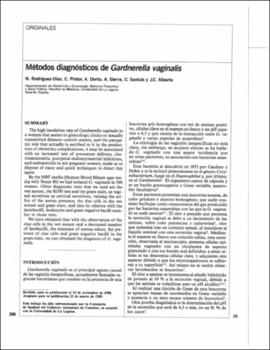Métodos diagnósticos de Gardnerella vaginalis
Date
1989Abstract
The high insolation rate of Gardnerella vagina/is in a women that assists to ginecologic clinics or
sexually transmitted diseases control centers, and the patoge nic role that actually is ascribed
to it in the produc tion of obstetrics complications, it may be associated with an increased rate
of premature delivery, cho rioamnionitis, puerperal endomyometrial infections, and endometritis in
not pregnant women, make us to dispose of eassy and quick techniques to detect this agent.
By the HBT media (Human Blood Bilayer agar me dia with Tween 80) we had isolated G. vagina/is in
398 women. Other diagnostic tests that we used are the wet mount, the KOH test and the gram stain,
as vagi nal secretions as cervical secretions, valuing the uti lity of the amina presence, the
due cells in the wet mount and gram stain, and also its relation with the lactobacilli, leukocytes
and gram negative bacilli num ber in those tests.
We have obtained that with the observation of the clue cells in the wet mount and a decreased
number of latobacilli, the existence of amina odour, the pre sence of clue cells and gram negative
bacilli in the gram stain, we can obtained the diagnosis of G. vaginalis.





